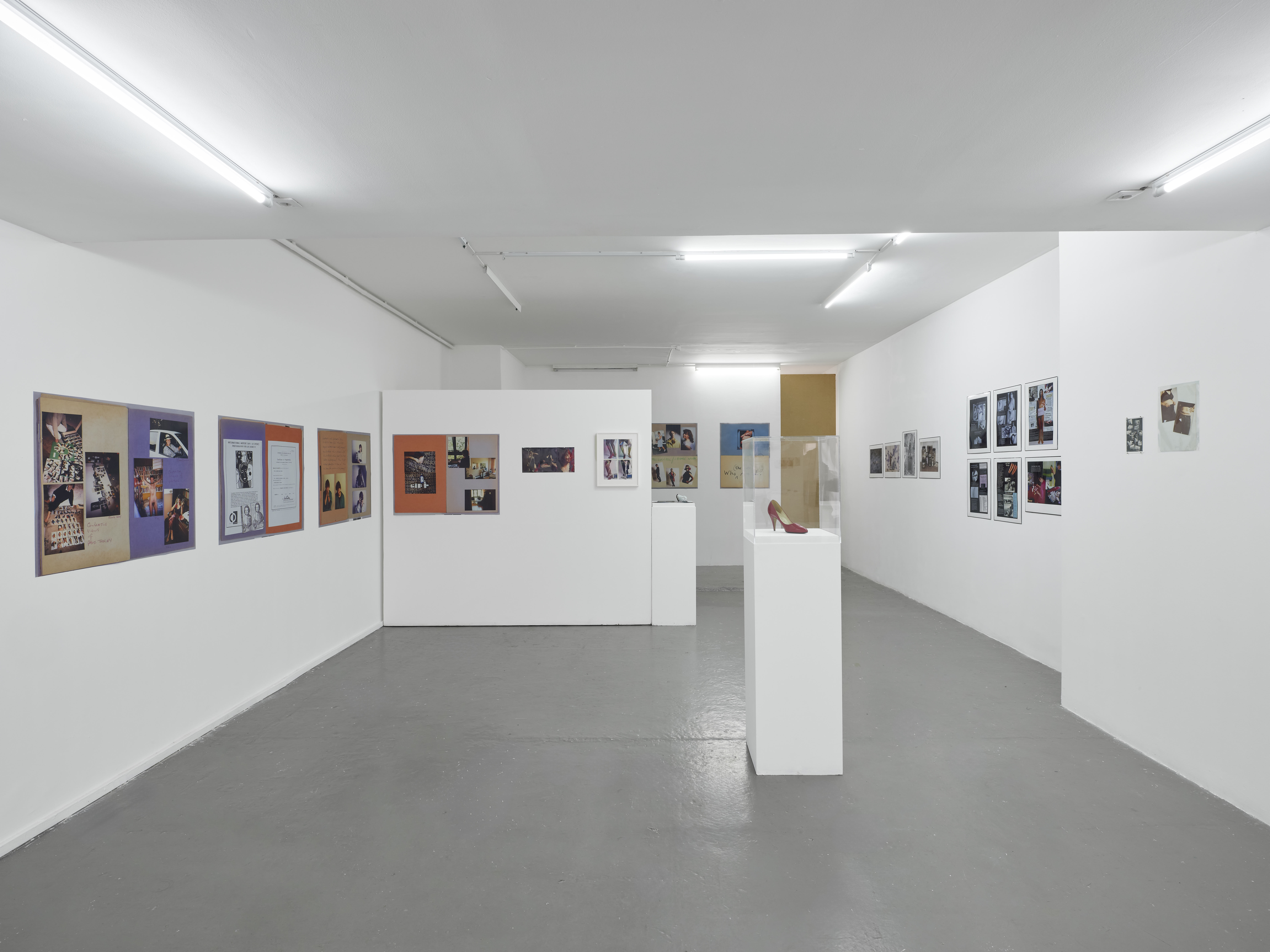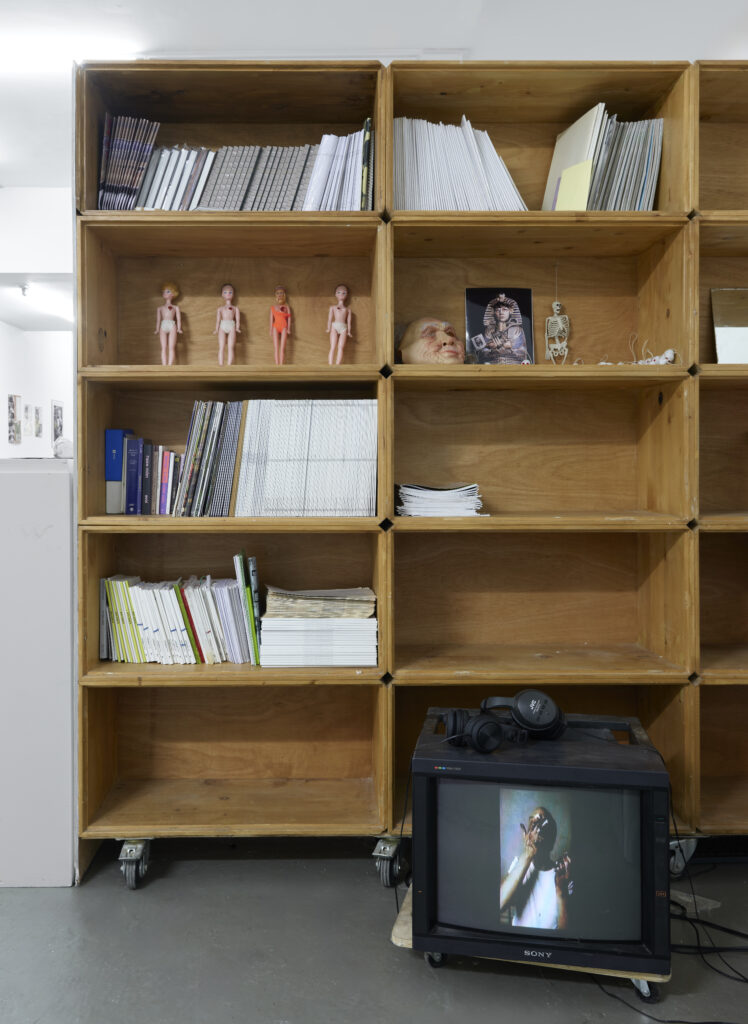Jo Spence, October 17 – November 23, 2025 @Treize, Paris

PRESS
👁🖤👁 Vogue par Julie Ackermann: À Paris, Jo Spence bouscule les tabous autour du corps des femmes
👁🖤👁 Frieze par Anya Harrison: The Best Shows to See in Paris
👁🖤👁 Trois Couleurs par Julien Bécourt: Jo Spence à la Galerie Treize : l’image comme arme politique
Jo Spence
October 17 – November 22, 2025
a project by Georgia René-Worms
in collaboration with Gallien Déjean and Emmanuel Guy
open Thursday–Saturday, 2–7 pm, and by appointment
Where have the pieces gone? A few months ago, the poet Liliane Giraudon shared with me a text in which she wonders: where have the pieces gone—the pieces of her left breast, her right breast, then her ovaries—those parts that were removed over the course of her hormone-dependent cancers. Through this question, “Where have the pieces gone?”, she raises an issue that goes beyond the medical. It is perhaps the question of a certain experience of dispossession—of our bodies, our political histories, and the ways in which they are fragmented, absorbed by institutions. Perhaps these “bad” pieces, these leftovers, still belong to us and might constitute a possible history of the margin—a history that, ultimately, would speak of our collective center. Perhaps these “bad” pieces could allow us, through a kind of refusal, to build in resistance new forms of narrating our political bodies. Liliane Giraudon opens her book Madame Himself with the sentence: “we will find words for this.” Giraudon (b. 1946) has never stopped constructing narratives of resistance from the place of those who are meant to remain invisible. And it is certainly there that the Marseille-based author and the London photographer Jo Spence (1934–1992) transform what happens to the body, leading it in unexpected directions in order to represent this ever-changing image of the self.
“The only bright spot in this depression was the arrival of the photographs I had taken in the hospital…
I was absolutely stunned by what I had photographed. I couldn’t believe I had seen all that, then already forgotten it. I had already repressed what had happened to me. But there, the photographs taken by my ‘guardian self’ reminded me of it—all those details. That shows one of the advantages of photographing your own traumas: before they close over.”³
Born in London in 1934 to a working-class family, Jo Spence trained outside traditional art institutions. Initially a typist—a profession she would keep throughout her life—she became interested in photography while working as a secretary in a photo development lab, a space where photographic practice was rooted in the social and political realities of everyday life. This autodidactic entry point would become the foundation of an oeuvre deeply marked by questions of class, gender, and power in the production and circulation of images. Jo Spence died in 1992 from leukemia, after several years of treatment and partial remission from breast cancer. For over three decades, she developed a photographic practice through a socialist feminist lens, influenced by the legacy of the 1920s–1930s workers’ photography movement. During the 1960s, she worked as a commercial portrait photographer, producing images for working- and middle-class London families. This work, conducted within the domestic economy of photography, allowed her to observe the mechanisms of social representation: how pose, décor, lighting, and framing all participate in constructing stereotypical identities. These visual forms, which she had once employed, became the very codes she would later subvert—often with humor—to critique and dismantle them. In the mid-1970s, Jo Spence joined movements for popular education and community action. She co-founded the Hackney Flashers collective (1974–1980) with other feminist activists, photographers, and educators. The Hackney Flashers drew upon methods derived from cultural Marxism and critical education theory. They denounced wage inequality between men and women, the double working day of mothers, and the infantilizing yet glamourized images of women that circulated in the media of the time.
“How can we bring a story like Cinderella out of the archives, the shelves, the storerooms, and try to revalue its latent class content—its political and social uses?”⁴
Alongside this collective work, Jo Spence gathered a large body of photographic material documenting how images of women’s social lives were used, particularly in the women’s press. Within these visual archives, one can discern the “cracks” created by the mental load of domestic and professional life—cracks that were exploited to promote the use of benzodiazepines, which had just appeared in the 1960s and were aggressively marketed as tools to better manage professional, family, and emotional life. These investigations within the Hackney Flashers collective gave rise—beyond the group itself—to a new corpus of work centered on the injunction to happiness, particularly marital happiness. Spence developed a line of inquiry that moved from fairy tales to Lady Diana. This research, conducted between the late 1970s and 1982, culminated in her thesis Fairy Tales and Photography, or, Another Look at Cinderella. The work with the Hackney Flashers and this thesis marked a methodological turning point. Building on these experiences, Spence participated in founding Camerawork (1976) and the Photography Workshop in London, two organizations devoted to a democratic and critical approach to photography. There she developed a horizontal model of teaching, where photographic technique was inseparable from the ideological analysis of images. The Photography Workshop became a site of experimentation that bridged visual education, social research, and self-representation. This approach—later termed photo-therapy—consisted of using photography not as a means to display oneself, but as a way of thinking oneself through the image.
The exhibition presented at Treize spans a decade, from 1982 to 1992. This project, initiated more than three years ago, was developed between two archives: the Jo Spence Memorial Library Archive at Birkbeck University and the Jo Spence Fund at the Bibliothèque Kandinsky in Paris. Beyond being the artist’s first retrospective in France, the exhibition explores the porous boundaries between different statuses of the artwork. Avoiding the trap of fetishization, it shows how images circulate within Spence’s practice—reused, re-performed, re-edited. Here, the notion of the “original” is not central. This is exemplified by the laminates—photo boards and plasticized photomontages—whose primary purpose was to circulate in a portfolio and be exhibited outside traditional art venues. Most of the photographs from this period focus on the patient’s experience and on the decision to become more active, less submissive to medical authority. These images derive from the principles of photo-therapy, which can be situated in the lineage of Augusto Boal’s Theatre of the Oppressed⁶ or co-counseling (peer listening). Through photo-therapy, Spence sought to explore her feelings of powerlessness as a patient, her relationship to doctors and nurses, and the infantilization she experienced when being “managed” and “treated” within a state institution.
“Just as women’s bodies are fragmented—in advertising and pornography, for instance—they are also fragmented in orthodox medicine, where signs and symptoms are handled by an impressive array of specializations, yet the body as a whole, or the patient’s way of life, are rarely considered.”⁵
The series exhibited at Treize—from the Cancer Project to the Final Project—raise questions not only about treatment choices, but also about the way patients are treated by medical institutions. Diagnosed with breast cancer at age 48, Spence was instructed—without real discussion—to have her breast removed. This decision prompts us to question how institutions validate women’s bodies once they are no longer reproductive or are approaching menopause. Through series such as The Picture of Health (1982–1986), Narratives of Dis-ease (1989), and Remodelling Photo History (1981–1982, with Rosy Martin), she explored the construction of the female body as both ill and medicalized. Her images became spaces of identity negotiation, where she revisited the institutional (medical, media, familial) discourses that shape the perception of the body.
Together with Martin, Spence developed photo-therapy as a hybrid practice between performance, pedagogy, and visual psychoanalysis—where the reappropriation of images, through staging, repetition, and play, becomes both a therapeutic and political gesture.
After her tumor removal, the artist chose to refuse invasive therapies and turned instead to non-Western healing practices to accompany her body. This decision—which we do not necessarily endorse—nonetheless questions one’s relation to a public healthcare system in the midst of liberalization. It echoes the situation of the British health system in the 1980s and resonates today with the liberalization of hospital systems in France. On the eve of her surgery, Jo Spence made a self-portrait with the words “Property of Jo Spence” written across her left breast. This image embodies her desire to retain ownership of her identity—even when her body was handed over to medical authority. Doctors may have medical power, but her subjectivity, her sense of humor, remained her own. Jo Spence’s photographic and theoretical writing can be understood today through what we now call affect theory: the idea that lived experience can serve as a resource for producing knowledge. A section of the exhibition presents a selection of scrapbooks, reproduced both in large format and as facsimiles.
These scrapbooks—substrates in which her personal life unfolds, from the significance of romance and interpersonal, familial, or friendly relationships—occupy a space between self-journal and visual laboratory. They reveal a practice in which the intimate becomes a political and critical terrain. These objects illustrate the dialogue between the materiality of the personal, the everyday, and Spence’s visual and theoretical research. In them, one searches for—and finds—the delicate interface between lived life and produced work.
The scrapbooks question our systems of classification and, consequently, our ways of envisioning things, people, and works: intimate archives, professional archives, pedagogical archives, art.
Inevitably, the exhibition closes with the Final Project. The suspended point of death—with leukemia diagnosed in 1990—led Jo Spence, accompanied by her ex-husband Terry Dennett and her partner David Roberts, to a process of self-personalization of death. She asked: “How can leukemia be made visible? Well, how? It’s impossible.”⁸ In continuity with her process of photo-therapy, she created a series of photographs where, beyond her own image, she used various props as allegories of death. This process can be related to what philosopher Rosi Braidotti describes as the logical complement of the notion of autopoiesis: the personalization of death as a means of cultivating life through creativity. Such an approach—a “style” of conceptual creativity—supports counter-habits or alternative memories that do not repeat or confirm dominant modes of representation. Here, as a final gesture, the facsimiles of the Final Project can be freely consulted, breaking with the static status of works on display and bringing them closer to the intimate act of research within the artist’s archives.
Georgia René-Worms
¹ Liliane Giraudon, Madame Himself, Paris, P.O.L, 2021.
² Camille Richert, Hackney Flashers, Parents Must Unite + Fight – Hackney Flashers: Agitprop, Labor and Socialist Feminism in England.
³ Jo Spence, Putting Myself in the Picture: A Political, Personal and Photographic Autobiography, Camden Press, 1986, p. 145.
⁴ Jo Spence, Fairy Tales and Photography, or, Another Look at Cinderella, Master’s thesis, 1982.
⁵ Jo Spence, The Picture of Health?
⁶ Augusto Boal, Theatre of the Oppressed, Paris, La Découverte, 1979.
⁷ Jo Spence, The Picture of Health?, 1985.
⁸ Jo Spence, Final Project, 1990–1992.











All photography © Objets pointus